What is CRC Technology (Color Remediation Column)
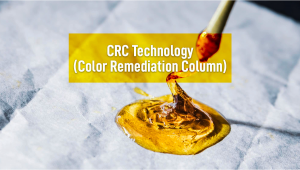
- 1. What is crc technology?
- 2. The basics of crc
- 3. Why is crc used?
- 4. Is crc safe?
- 5. How to detect crc extracts?
- 5. a. Aroma
- 5. b. Flavor
- 5. c. Color
- 6. In conclusion
Cannabis seeds growers and consumers used to be able to look at extracts and know their quality but, as the cannabis industry grows, new ways of making and processing extracts are discovered, which leads us to CRC. Color remediation column is a technique used to clean up cannabis extracts, removing bad odors, pesticides and even lightening the color of the concentrate. This technology makes it hard for consumers to know what they’re buying because color and smell are no longer a guarantee of the quality of a concentrate. There’s a huge debate surrounding CRC extracts, on one side, consumers claim that CRC products are better because you’re removing impurities while on the other side, consumers claim CRC can give low-quality extracts the same qualities as top-shelf products, which is kinda lying to the customers. If you’ve haven’t heard about CRC and don’t know enough to decide if it’s good or not, make sure to read along!
1. What Is CRC Technology?
CRC technology (aka color remediation column) refers to a technology where a steel cylinder is packed with sand, silica or activated charcoal among other media, to filter impurities out of cannabis extracts (such as BHO) while changing the concentrate’s color from dark brown or black to gold or even white.
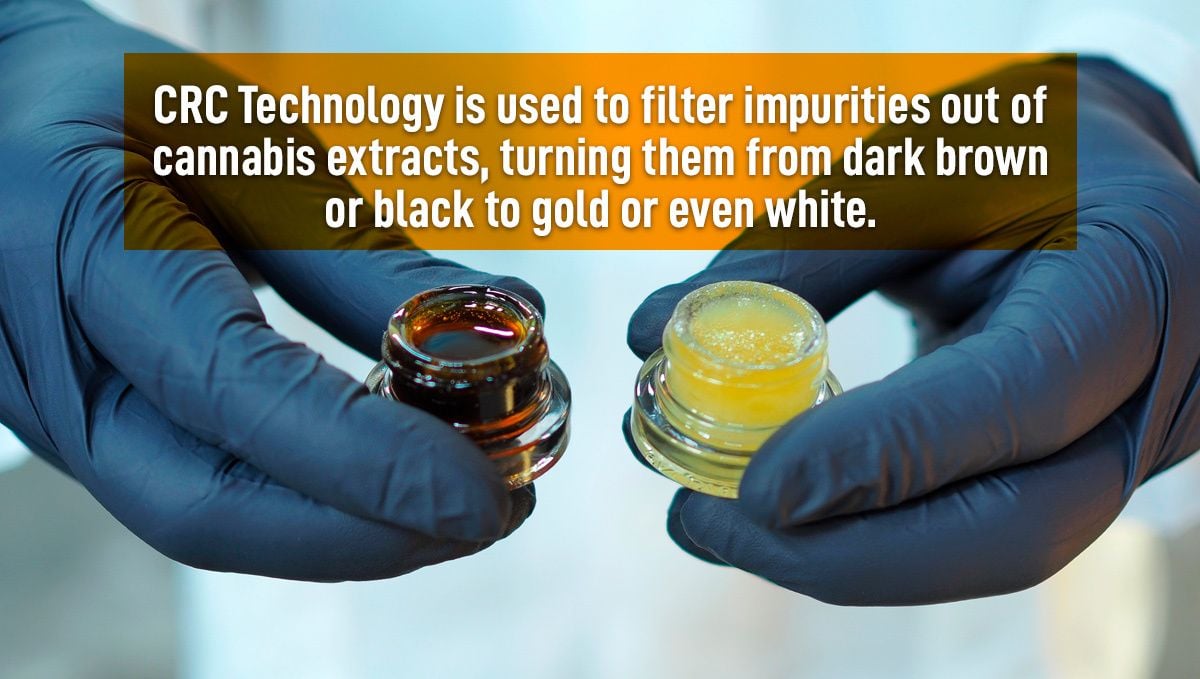
Although you can detect if CRC was used in a cannabis product, it’s not required so it makes it hard for consumers to know exactly what they’re buying. This happens because laboratories are not required to test for CRC technology and legal dispensaries are not obligated to disclose if CRC technology was used in their products.
Now, CRC is not just one thing, color remediation column refers to several different post-extraction processing methods that use different filtration media, equipment and sometimes can have multiple steps; meaning that there is no set way to use CRC, every producer has its own method. This technology uses the following media to filter out impurities:
- Silica;
- Diatomaceous earth;
- Bentonite clay;
- Activated charcoal and;
- Magnesol.
And a combination of several of the media mentioned above when applying CRC in multiple steps. This media, in combination with the right equipment, allows producers to take out the chlorophyll that makes extracts greenish or dark brown and the majority of impurities you get when producing extracts with low-quality cannabis flowers.
2. The Basics of CRC
CRC systems usually have a filter at the bottom and a paper filter above. These filters use media such as silica gel, activated charcoal, synthetic magnesium, and bleaching clays so the first step to CRC is to prepare the media.
Preparing the Medium
In general, CRC extractions use a mix of bentonite and silica gel as the main filters. These media have to be prepared through a heating and drying process, which without it, can clog flow, stopping production.
Calculating the Ratios
After the media has been prepared, it’s time to calculate how much to use. The amount of media depends on several things such as filter media, quality of plant mass, and setup. The idea is to use enough filter media to give the equipment time to work as too little media will not give enough time to filter. On top of that, the amount of media depends on the amount of plant material as fresh frozen plant material will need fewer media to remove chlorophyll than dry plant material or other impurities.
Flow Rate
Once everything is in place, it’s time to place the plant material or extraction in the extraction tubes. When using media for filtration, the flow rate can affect the efficiency of filtration. This means that a slower flow will ensure impurities are removed but it will take longer while a faster flow rate will not be efficient but will be much faster, so it’s essential you find the right flow rate to allow the filter enough time to filter out the impurities. Keep in mind that certain filter media and slow flow rate causes some extraction system to overheat. So remember that each extraction system is different and you should experiment with flow rates to avoid this kind of problem.
3. Why Is CRC Used?
CRC tech is new for most consumers, but those working in certain areas of the cannabis industry have known about it for a couple of years now. Back in 2016, extractors realized they could filter impurities out of extracts similar to how water filters work, and in 2017, the technology was already very popular despite extractors not talking about it.
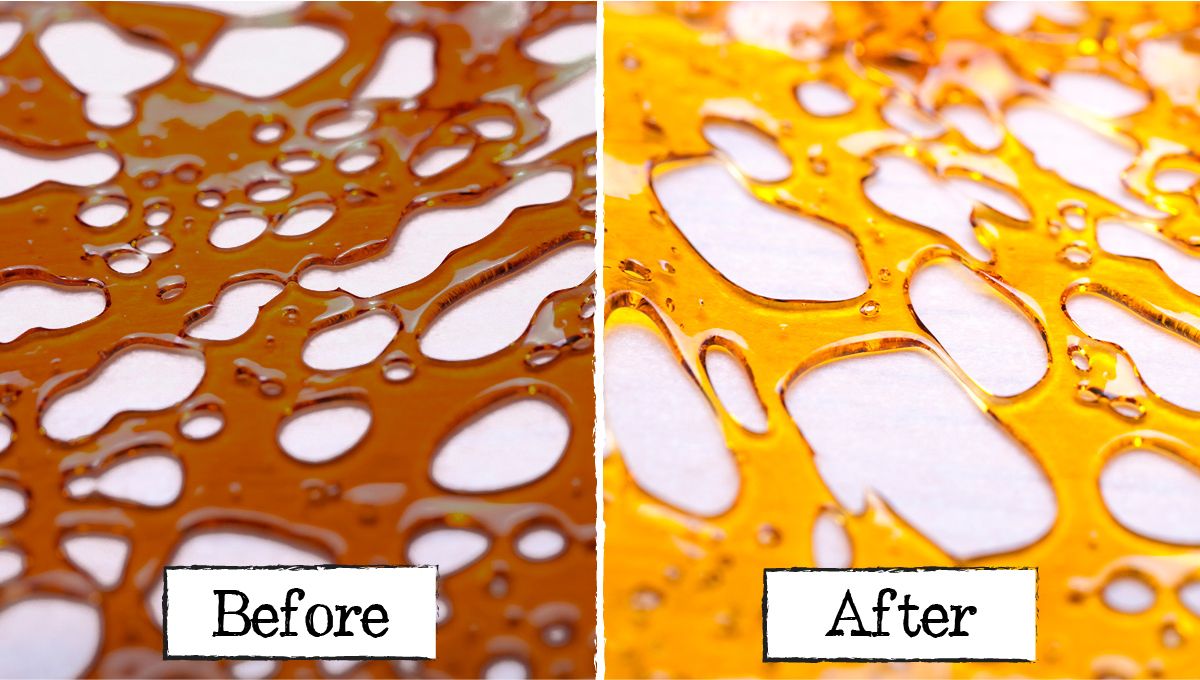
Experts claim that nowadays almost all extractors use CRC tech to some extent, estimating that over 90% of the legal cannabis market use CRC methods. Unfortunately, color remediation column is not only used to lighten the color of extracts. Some producers, especially in the illegal cannabis market use it to make low-quality products more appealing by removing pesticide residues, bad flavors and other impurities produced when converting CBD to THC synthetically, for example. CRC extraction is relatively new to the world of weed. The primary reason that it’s become a popular technique is because of its efficacy in removing certain unwanted pigments from cannabis extracts. What are pigments, exactly?
Well, we’re glad you asked! These are the molecules that give rise to the many different colors seen in plants. They reflect certain wavelengths and light and reflect others. For example, chlorophyll reflects green light, which makes many plants appear green to the human eye. Likewise, anthocyanins, a family of antioxidants found in many fruits and vegetables, reflect blue, purple, and red light. Other pigments result in dark and brown colors. When left in extracts, some of these molecules can make the end product seem rather unappealing. Therefore, their removal makes an extract that looks much more attractive to the consumer. The removal of impurities also results in cleaner smoke and improved flavor and aroma profiles.
4. IS CRC Safe?
It’s hard to say if CRC technology is safe because there’s not much research about CRC technology in cannabis products. Researchers have studied long-term exposures on miners working with diatomaceous earth and bentonite clay due to them breathing high concentrations of both for years and found out they can cause respiratory damage. Also, experts claim silica gel can hurt your stomach when eating, but there’s no research on what could happen with your lungs. Now, the main problem with using these media to filter out impurities is that, depending on the source, they may be contaminated.
Labs have found that CRC media can contain lead but experts say that it’s possible to make clean CRC products, claiming that a 0.45-micrometer screen can remove CRC media contamination from extracts despite the possibility of contamination being always present due to the lack of testing for CRC media. Despite CRC media not being tested, before entering a legal retailer all products must be tested so if they pass the test, there shouldn’t be a problem. But products in the black market are not tested so there’s still a huge concern for those who live in a place where cannabis is illegal and are forced to acquire black market illegal cannabis products.
5. How To Detect CRC Extracts?
If you’re still not convinced by CRC products, here are a couple of tips to help you identify a CRC concentrate. Just have in mind that it’s hard to differentiate one from the other so if you’re not sure and don’t want to risk it, it’s recommended you buy solventless extracts, hash, or live rosin over doubtful extracts because the products mentioned cannot be filtered like CRC products.
Most Common Cannabis Extracts
| Name | Type of extract | Name | Type of extract |
|---|---|---|---|
| Distillate | Solvent-based | Budder | Solvent-less |
| Crystals or Diamonds | Solvent-based | Wax | Solvent-based |
| Rosin | Solvent-less | BHO | Solvent-based |
In the list above you can see the different cannabis extracts you may find in your local dispensary. Solvent-less being extracts that cannot be filtered with CRC tech and solvent-based being the ones that can be filtered, although solvent-based doesn't necessarily mean they've been filtered with CRC.
Aroma
One of the main disadvantages of CRC tech is that it removes terpenes. Now, some cannabis extracts such as distillates don’t contain terpenes anyways, so it’s not a big deal. But other types of extracts contain a good amount so, if your extract has a strong chemical and lime smell, it probably is CRC.
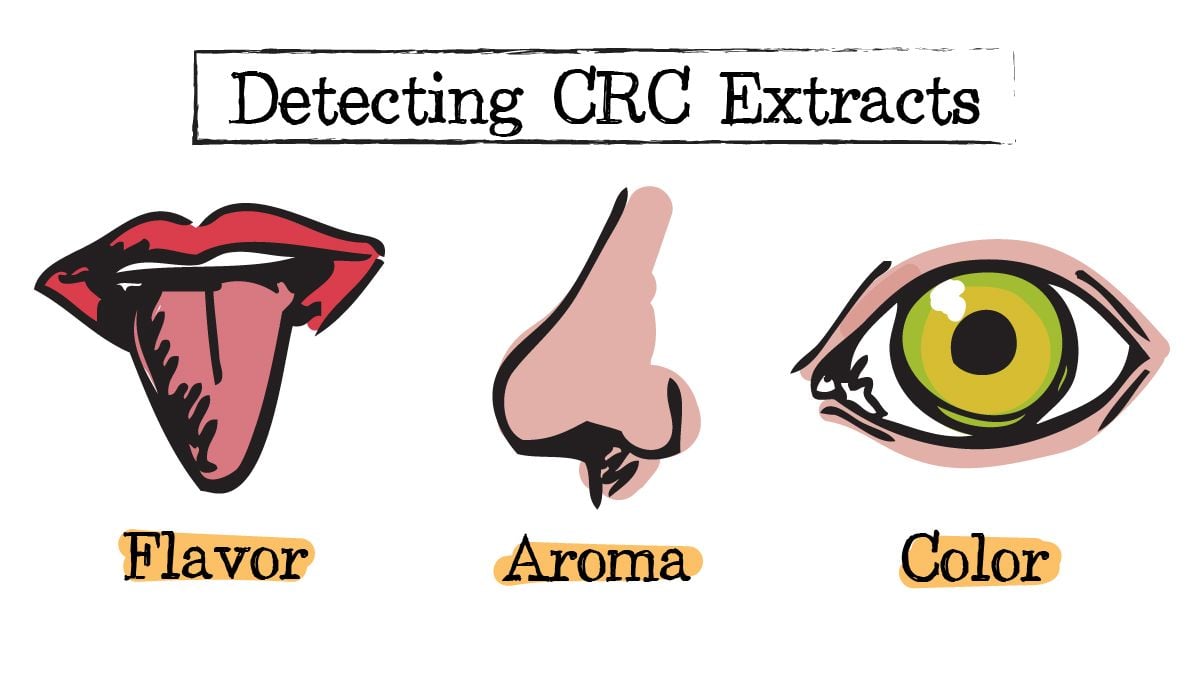
Flavor
Apart from the unnatural smell, you may be able to detect CRC extracts by the flavor. This happens because if you put too much CRC media in the filtering tube, the extract can end up with a strong chemical flavor. So if your extract tastes like chemicals, it might be a CRC product. Just remember that cannabis can have chemical-like terpenes, meaning that the CRC chemical flavor can be similar but won’t taste as good as natural cannabis terpenes.
Color
If you’re not an avid extract consumer then it may be almost impossible to detect CRC extracts by the smell and flavor but luckily, color is another giveaway of CRC extracts. As you may know, as trichomes mature, they get a natural amber color. This means that even the best extracts have a slight yellow hue so if you find an extract that’s completely white, it probably was made with CRC technology.
Unfortunately, there’s no way of knowing for sure if you’re buying CRC or not, so when in doubt, ask before making a purchase, the budtenders should be able to give you all the information you need. If they don’t know about CRC, make sure to contact the producer, they should be able to answer all your questions. At the end of the day, everything you smoke goes into your lungs so it’s recommended you buy cannabis products from trusted sources and always avoid illegal cannabis.
6. In Conclusion
The truth is, if you’re not a regular dabber then you won’t be able to differentiate CRC from non-CRC, so it all comes down to trust. With so many companies producing so many cannabis extracts, the only way for you to know what you’re getting is by buying from trustworthy retailers. Have in mind that cannabis extracts go for around $50-$80 a gram or even more, so if you find a retailer selling a gram of “top-shelf” extract for $20, you probably want to stay away from it.
If you have more tips on how to identify top-quality extracts, feel free to help fellow consumers by leaving them in the comment section below!
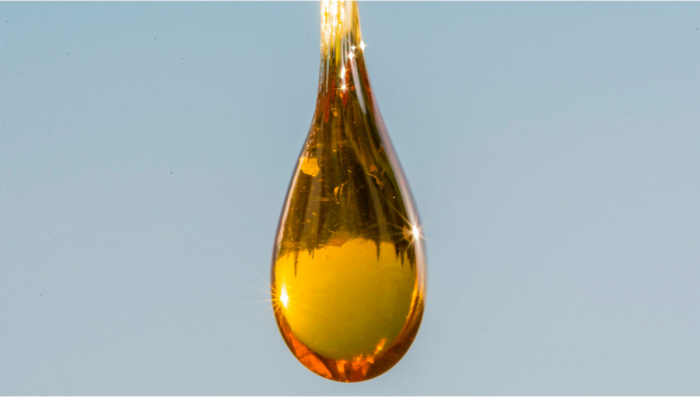









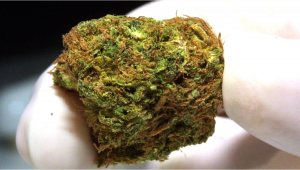
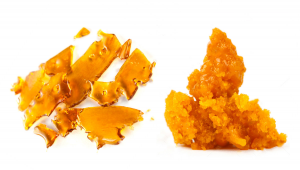

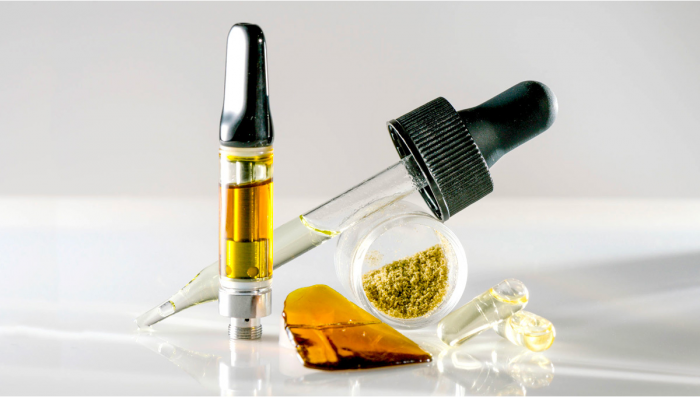
Comments